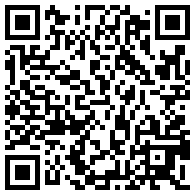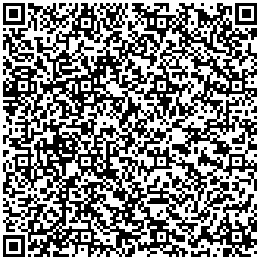The Three AI Millionaire Playbooks
1. The AI Service Agency (Fastest Path to $1M)
This is about using existing, powerful AI tools (often no-code or low-code) to solve high-value business problems for clients faster and cheaper than they could do it themselves.
My Action Plan:
🎯 Find a Burning Niche Pain: I wouldn't build an AI solution for everything. I'd pick one industry with a clear, expensive, and repeatable bottleneck.
Examples: Automating lead follow-up for real estate agents; generating personalized video ads for small e-commerce brands; or creating custom financial reports for small accounting firms.
🛠️ Master No-Code Automation: I would become an expert in connecting AI models (like Generative AI) with workflow tools (e.g., Zapier, Make.com, or specific no-code AI builders).
Goal: Build a custom AI "agent" or workflow in hours, not weeks, to solve the niche pain.
💰 Productize and Scale: I would turn my custom solution into a productized service (or "micro SaaS"). Instead of charging by the hour, I'd charge a high-value monthly subscription.
Example: "$3,000/month for our AI Receptionist that qualifies 100% of your inbound leads 24/7." This shifts the focus from cost to ROI.
2. The Niche Content Creator / Solopreneur (High Leverage, Scalable)
This path uses Generative AI (text, image, and video) to produce extremely high volumes of valuable, highly-niche content or unique digital products with a tiny operational team (maybe just me and the AI).
Step 1: Pick a High-Value Skill AI Can Supercharge
Choose ONE area and go deep:
Best Options for 2026
-
AI Content Creation
-
Short-form videos (Reels, Shorts)
-
Blogs + newsletters
-
AI Coding / No-Code Tools
-
Build simple apps
-
Automations (chatbots, workflows)
-
-
AI Marketing
-
Ads
-
Email marketing
-
Social media growth
-
-
AI Education
-
Courses
-
Coaching
-
Study tools
-
Pick what you enjoy + what people pay for.
Step 2: Learn AI Tools Properly (Not Just “Try” Them)
Master tools like:
-
ChatGPT (thinking + writing)
-
Image generators (designs, thumbnails)
-
Video AI (editing, captions)
-
Automation tools (basic workflows)
Key rule:
Don’t ask AI to replace your thinking.
Ask it to multiply your output.
Step 3: Build a Small Income First (Very Important)
Millionaires don’t start with millions.
Examples for Teens:
-
Freelance AI services (writing, editing, design)
-
Run social media pages with AI help
-
Create digital products (guides, templates)
-
Help small businesses use AI better
🎯 First target:
-
$10/day → $100/day → $1,000/month
This builds:
-
Skill
-
Confidence
-
Proof that you can earn
Step 4: Turn Skill into a Scalable Business
This is where AI shines.
Scalable Models:
-
YouTube channel (AI-assisted scripts + editing)
-
Subscription newsletter
-
SaaS / AI tool (later stage)
AI allows one person to do what 10 people used to do.
Step 5: Reinvest, Don’t Waste
If you earn:
-
Don’t show off
-
Don’t gamble
-
Don’t chase “fast money”
Instead:
-
Upgrade tools
-
Learn marketing
-
Improve skills
-
Save capital
Wealth = long-term discipline, not luck.
Step 6: Build an Audience (This Is GOLD)
In 2026:
Attention = Money
Use AI to:
-
Post consistently
-
Write better content
-
Test ideas faster
Platforms:
-
YouTube
-
Instagram
-
X (Twitter)
-
Blogs
Even a small loyal audience can make big money.
My Action Plan:
🔍 Identify an Underserved Information Gap: I would find a niche where people are willing to pay for highly specific, curated information or tools.
Examples: A service generating daily, hyper-specific stock market analysis for niche sector investors; an AI-powered curriculum generator for homeschool parents on a specific topic; or creating faceless YouTube channels that cover highly technical topics (e.g., obscure history or advanced physics concepts) using AI video/voice tools.
🤖 Build an "AI Production Pipeline": I would set up a consistent, automated system for content creation:
Idea Generation: AI finds trending questions/keywords in the niche.
Drafting: AI generates the article/script/product design template.
Refinement: I spend my time heavily editing, fact-checking, and adding unique human insight and expertise.
Distribution: AI-powered tools automate posting, scheduling, and optimizing for SEO/social platforms.
💸 Monetize with High-Margin Products: I would use the content to build an audience and sell high-value digital products, not just rely on ad revenue.
Examples: Niche e-books, premium newsletters, paid courses, or specialized software templates.
3. The AI Tool Developer/Integrator (Highest Potential, Highest Risk)
This path involves developing a proprietary AI solution or being an expert consultant that helps large businesses integrate complex AI into their core operations.
My Action Plan:
🧠 Deepen My Technical Skill: I would focus on Prompt Engineering and understanding Agentic AI—the systems that allow AI to perform a series of actions autonomously (like completing a multi-step project without continuous human input).
Note: The goal isn't necessarily to build a Foundation Model, but to master how to deploy and customize existing models for massive enterprise value.
🤝 Become the "Integration Specialist": I would target mid-to-large-sized businesses struggling to move past the "AI pilot project" stage. My service would be the integration layer that connects the general-purpose AI tools to their messy, proprietary internal data and systems.
Examples: Building a custom AI system for a logistics company to instantly forecast inventory risk across thousands of SKUs based on real-time news and weather data.
📈 Focus on Cost Savings and New Revenue: Instead of charging a small fee, I would charge a percentage of the measurable cost savings or new revenue the AI system generates. This ensures the client sees the value and makes the $1M goal achievable with just a few big clients.
🎯 My Mindset for 2026
The core difference between an AI user and an AI millionaire is leverage:
I would prioritize systems over effort. My goal would be to build an asset (a custom agent, a content pipeline, a productized service) that compounds my time and earns 24/7.
I would move with extreme speed. AI lowers the barrier to entry, meaning my idea will be copied quickly. I would focus on a "fail fast, fix faster" iteration cycle, getting an MVP (Minimum Viable Product) out in days, not months.
I would focus on the intersection of human and machine. The most valuable work will be where I add human expertise, empathy, and strategic judgment to the infinite output of the machine. The AI does the busywork; I do the high-value decision-making.
What I Would NOT Do ❌
-
No crypto hype
-
No “AI trading bots”
-
No scams or shortcuts
-
No illegal or age-restricted activities
Those destroy futures.
Reality Check (But Encouraging)
If you:
-
Start now
-
Learn daily
-
Build skills
-
Stay patient







